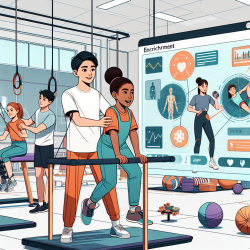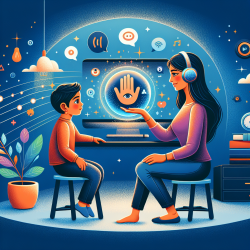The treatment of children with physical disabilities (CWPD) has historically been a challenging area for healthcare providers. A recent study titled "Treating Children With Physical Disabilities: A Video-Based Educational Resource Using Simulated Participants" offers valuable insights into improving attitudes and skills among healthcare practitioners. This blog explores the outcomes of this research and encourages practitioners to incorporate these findings into their practice or conduct further research.
The Need for Improved Training
Despite the prevalence of physical disabilities, many healthcare providers report discomfort and lack of knowledge when treating CWPD. This gap in education often results in inadequate care and dissatisfaction among patients and their families. The study conducted by Kimmel et al. addresses this issue by developing a video-based educational resource aimed at improving healthcare students' attitudes toward CWPD.
Video-Based Educational Resource
The research team collaborated with stakeholders from the disability community to create a series of short video clips depicting a primary care visit using simulated participants. These videos were embedded into a 50-minute workshop delivered via videoconferencing. The primary outcome was measured using the Attitudes to Disabled Persons—Original (ATDP-O) scale, which showed significant improvement in students' attitudes post-workshop.
Key Findings and Implementation
- The workshop resulted in a measurable change in attitudes, with ATDP-O scores improving significantly (t(49)= 3.28, P= .002, Cohen's d= 0.38).
- The materials were easy to deliver virtually, making them accessible to a wide audience.
- The workshop emphasized the importance of normalizing interactions with CWPD while recognizing unique needs.
- Key clinical considerations were highlighted, such as ensuring accessibility, addressing lifestyle questions, and engaging directly with the child rather than just the caregiver.
Encouraging Further Research
This study is a promising step toward enhancing medical education for treating CWPD. However, it also highlights the need for further research to develop comprehensive curricula that include various forms of disabilities beyond physical ones. Practitioners are encouraged to explore these resources and consider how they can be integrated into their training programs.
Conclusion
The use of video-based educational resources has shown potential in improving healthcare practitioners' skills and attitudes toward treating CWPD. By incorporating these findings into practice and continuing research efforts, we can work towards providing more compassionate and effective care for children with physical disabilities.
To read the original research paper, please follow this link: Treating Children With Physical Disabilities: A Video-Based Educational Resource Using Simulated Participants.










